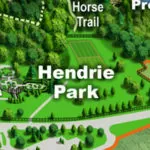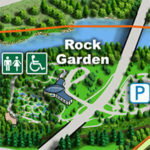| Membership | Price (+HST) |
|---|---|
| Single | $85/year |
| Single Plus | $120/year |
| Family | $130/year |
| Family Plus | $175/year |
| Contributing | $300/year |
| Supporting | $600/year |
| Sustaining | $1,000/year |
| Benefactor's Circle | $2,500/year |
| Director's Circle | $5,000/year |
| President's Circle | $10,000/year |
Ensuring future of Ontario’s iconic trumpeter swans
Ensuring the Future of Ontario’s Iconic Trumpeter Swans
RBG’s Plea for Visitor Support
By Dr. David Galbraith, Director of Science, Royal Botanical Gardens
First published in The Hamilton Spectator, July 2024.
Trumpeter Swans (Cygnus buccinator) are majestic creatures, admired for their graceful presence and impressive size. They hold the distinction of being the largest species of aquatic bird globally and are the heaviest bird native to North America. Trumpeter Swans are not only an awe-inspiring sight but also a symbol of the wild beauty and biodiversity of the continent. Therefore, ensuring that their journey of recovery continues without depletion is crucial to preserving this iconic species.
By the late 19th century, Trumpeter Swans had vanished from Eastern Canada due to relentless hunting and habitat loss. Their disappearance marked a somber chapter in the region’s natural history. However, in the mid-1980s, a dedicated conservation effort brought these magnificent birds back to Ontario, where they have since flourished. No longer listed as endangered, Trumpeter Swans are now protected under the federal Migratory Birds Convention Act.
In a testament to their significant recovery, their presence has contributed to Hamilton and Burlington’s recognition as Bird Friendly Cities by Nature Canada.
These birds are vital indicators of wetland health. Their presence signifies a thriving, diverse environment, and RBG is proud that its conservation efforts have led to such a habitat, resulting in Trumpeter Swans nesting on its property.
However, despite their success in population growth, individual Trumpeter Swans still face threats, many of which are human-induced. RBG pleads with its visitors to help safeguard these birds, asking them to avoid three critical behaviors:
First, people should not approach nests or young swans. When in natural areas, it’s essential for visitors to keep their dogs on leash and remain on designated trails to minimize disturbances. This year, a pair of Trumpeter Swans nested on the lower Grindstone Creek in Royal Botanical Gardens’ Hendrie Valley. Unfortunately, thoughtless trail users have harassed these birds, leading to the loss of a baby swan.
Second, people should not feed Trumpeter Swans. Many well-meaning individuals offer food, such as bread, to wildlife, but this can cause severe nutritional problems. For Trumpeter Swans, excessive carbohydrate intake can lead to a condition called Angel Wing, a permanent disability that impairs their ability to fly. It’s crucial to let these birds forage naturally to maintain their health. Both RBG and the City of Burlington have a strict policy prohibiting the feeding of wildlife, with enforcement regulated by the City of Burlington’s By-law Enforcement Department. If you witness wildlife feeding, please report it to Burlington By-Law Enforcement.
Third, people fishing should be mindful of their location, as it poses significant risks to nearby Trumpeter Swans. Barbed hooks can be fatal if ingested, and lead fishing weights are toxic. Additionally, discarded fishing line can entangle or be ingested by wildlife, potentially causing injury or death. It is recommended to use less harmful alternatives, such as lead-free weights and barbless hooks.
By respecting these guidelines and supporting conservation efforts, visitors can contribute to creating a safe and nurturing environment for Trumpeter Swans and other wildlife within our community. Together, we can ensure these majestic birds continue to thrive for generations to come.
Dr. David Galbraith is Director of Science at Royal Botanical Gardens (RBG). RBG is a leading environmental organization in our community. Learn more about the Impacts of Wildlife Feeding along RBG Trails.
More from the RBG Blog
Check out RBG’s blog for announcements, articles, and more from Canada’s largest botanical garden.
Want to be sure you hear first? Sign up for our weekly e-newsletter to hear about upcoming events, weekend activities, articles, and more!












